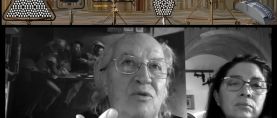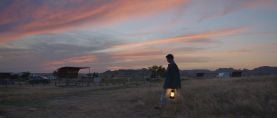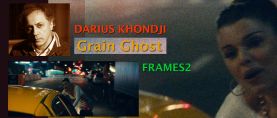
2016 In Review
January is the occasion to look back at new and recurrent cinematic trends of the past year, while also recalling some of the wonderful films I've seen in 2016...
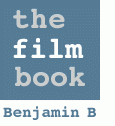
Happy New Year!
January is the occasion to look back at new and recurrent cinematic trends of the past year, while also recalling some of the wonderful films I’ve seen in 2016…
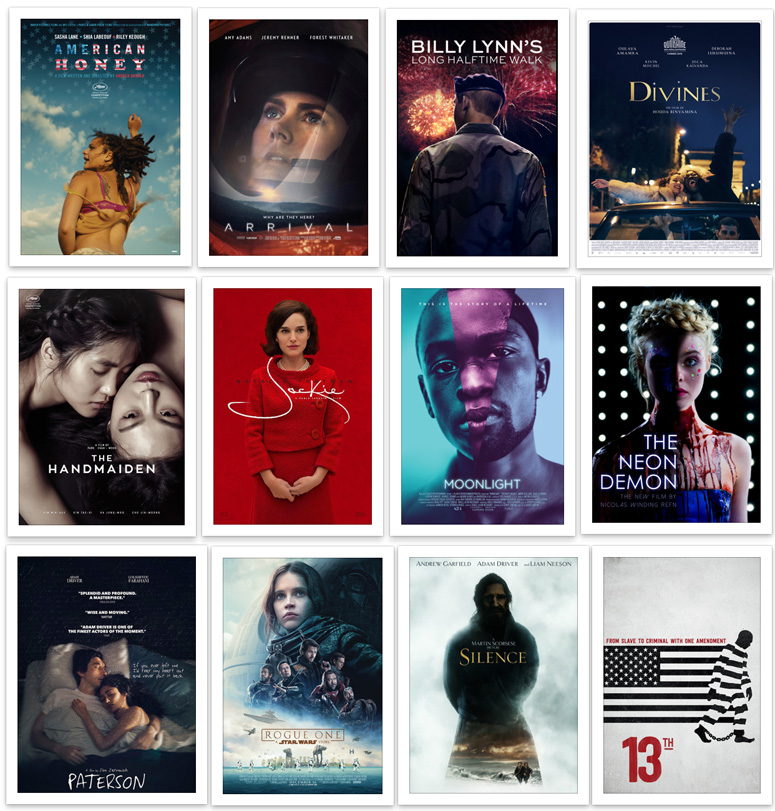
THE HANDMAIDEN - JACKIE - MOONLIGHT - THE NEON DEMON - PATERSON - ROGUE ONE - SILENCE - 13TH
Trends
1. Chivo's New Naturalism
2. Cine Expressionism
3. Poetic Rhythms
4. Variations
5. African-American Filmmakers
6. LED Lighting
7. Large Format
8. Future of Cinema
9. VR Masterworks
+++
1. Chivo's New Naturalism

2016 began with the Oscar triumph of Emmanuel "Chivo" Lubezki, ASC, AMC, who made history by winning his third consecutive Academy Award for the cinematography of The Revenant, directed by Alejandro Gonzalez Iñarritu. Emmanuel's triple awards confirm his leadership role in what I call New Naturalism.
Chivo developed and evolved his approach to naturalism over the past 15 years in collaborations with directors Alfonso Cuaron, Terrence Malick and Iñarritu, on films like Y Tu Mama Tan Bien (2001), The New World (2005) and The Revenant (2015) -- indeed there is a remarkable kinship between the latter two films.
New naturalism reflects a contemporary desire to create an authentic cinematic experience that is faithful to the complexity of real life, and involves:
-- a commitment to using natural light
-- long takes with complex handheld or Steadicam movement
-- an openness to serendipity
+++
2. Cine Expressionism

On the opposite end of the spectrum from naturalism, some movies willfully paint artificial worlds of lighting and color. The malleability of digital cameras and LUTs sometimes enables this form of Cine Expressionism.
This approach is partially visible in Woody Allen’s CAFE SOCIETY, with cinematography by the legendary Vittorio Storaro, ASC, AIC. In his first film with a digital camera, Vittorio inserts moments of dramatic hard lighting and strong colors inside more realistic scenes, and displays his gift for stunning portraiture.
THE NEON DEMON by Nicolas Winding Refn is unabashedly over-the-top cinema, and sometimes veers into music and fashion video territory. Yet cinematographer Natasha Braier, ADF, serves her director well, creating painterly set pieces, alternating soft portraits, scenes full of highlights or darkness, and vibrant colors.
THE HANDMAIDEN by Park Chan-Wook is an intricate story of love and deception. The cinematography of Chung Chung-Hoon creates a soft, sensual world for this erotic thriller. The level of mastery of the South Korean director and cinematographer is no doubt enhanced by their longtime collaboration.
NOCTURNAL ANIMALS by Tom Ford skillfully intercuts the story of a lovelorn wife with the violent novel she is reading. The sophisticated cinematography of Seamus McGarvey, ASC, BSC, envelops this open-ended revenge tale in dangerous, textured night exteriors, and stark, lonely interiors. Seamus shot with 35mm negative.
+++
3. Poetic Rhythms

Feature filmmaking is primarily a prosaic art form, a narrative arc that unfolds in three acts. I was struck by several projects this year that ventured to a more poetic storytelling approach, often with camera movement and non-linear editing.
In KNIGHT OF CUPS, Chivo's dazzling cinematography is structured by rhythmic editing to create cinematic verses that accompany the characters’ voice-over musings. Director Terrence Malick worked over many months with a team of editors to accomplish this lyrical flow: A.J. Edwards, Keith Fraase, Geoffrey Richman and Mark Yoshikawa.
PATERSON by Jim Jarmusch, with elegant cinematography by Fred Elmes, ASC, is a wonderfully simple evocation of a week in the life of a poet. The film evolves as variations on a theme, and gently builds up its power from the repetition of daily rituals.
JACKIE by Pablo Larrain is a masterful blending of iconic public images of the JFK assassination with a daring imagining of the First Lady’s private moments, wonderfully rendered by the handheld operating and suffused lighting of Stéphane Fontaine, AFC. Editor Sebastian Sepulveda creates a distinctive, fluid stream of scenes that invites the viewer into a reverie that mix his own memories with that of the lead character.
Stéphane had a great 2016, with the release of two other noteworthy films: CAPTAIN FANTASTIC by Matt Ross and ELLE by Paul Verhoven.
JACKIE is the most powerful film I’ve seen this year.
+++
4. Variations
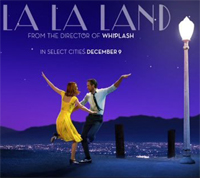
New Naturalism, Cine Expressionism and Poetic Rhythms are really closer to interweaving motifs than exclusive categories. Much of today's cinema blends different stylistic elements in variations.
LA LA LAND by Damien Chazelle, with cinematography by Linus Sandgren, FSF, is a celebration of the musical, inspired in part by Jacques Demy, shot in 35mm 4-Perf negative to accomodate the historical 2.55:1 Cinemascope format. The filmmakers chose to shoot the dance numbers with single takes, creating an intricate, playful camera choreography that marries the dancers' moves.
THE LIGHT BETWEEN OCEANS features majestic landscapes shot by Adam Arkapaw that director Derek Cianfrance has said were inspired by the films of David Lean.
In AMERICAN HONEY the dynamic, freewheeling cinematography of Robbie Ryan, BSC, gives a spontaneous energy to this touching road movie by Andrea Arnold.
SILENCE by Martin Scorsese combines natural light with other approaches by Rodrigo Prieto, ASC, AMC, to create its acclaimed cinematography. Rodrigo's inspirations for the soul-searching period piece also included Baroque painters and Japanese screen art. He shot 35mm negative for most of the film, but went to an Alexa for some night scenes.
+++
5. African-American Filmmakers

Last year’s Oscar nominations were justly criticized by the #OscarsSoWhite hashtag, reflecting a paucity of nominated African-American filmmakers. The Academy appropriately responded by enlarging its membership to make it more diverse. This year, there are appears to be a better chance that we will see nominations for black directors and their films.
Denzel Washington is the director and lead actor of FENCES, based on a play by August Wilson set in the 1950s about a garbageman who is too embittered to accept the love of his wife -- masterfully played by Viola Davis --and two sons. Cinematographer Charlotte Bruus Christensen shot 35mm negative with Panavision C series anamorphic lenses to give a cinematic quality to the story's confined spaces, and in particular the back yard location in Pittsburgh, with lighting that lent a warm color to the bittersweet story.
MOONLIGHT is a stunning film by director Barry Jenkins that is steeped in the black South Florida neighborhood of his childhood. Cinematographer James Laxton used an Alexa XT with Vantage anamorphic lenses to isolate the characters in a color-drenched world tinted by film-stock inspired LUTs. In some scenes, the film's expressionism is further heightened by a swirling camera with bokeh backgrounds. MOONLIGHT follows its lead character in three periods of his life, from childhood to adulthood, to deliver a poignant portrait of a black gay man seeking to break his cruel isolation.
On the cinematography side, it's encouraging to see a well-deserved ASC nomination for Bradford Young, ASC, for his superb modulation of muted and strong lighting in Denis Villeneuve’s entertaining meditation on language, ARRIVAL. The film's centerpiece is a giant luminous environment inside the alien spaceship that evokes the immersive work of artist James Turrell.
To me, the most important documentary of the year is 13TH by Ava DuVernay. The director of Selma has created a thorough and thought-provoking historical analysis of mass incarceration in the US, with the provocative thesis that the 13th amendment of the Constitution replaced slaves with prisoners, making prisons an instrument for modern-day slavery.
Here in France, it is heartening to see Franco-Arab filmmakers emerge. DIVINES is a powerful film by Houda Benyamina, a Franco-Tunisian woman. The film stars the director's sister, Oulaya Amamra, as a tough teenage girl who tries to escape from poverty, and is enchanted by a handsome dancer. Julien Poupard, AFC, created a poetic, colorful canvas for the first-time director, who won the prestigious Camera d'Or award at the Cannes Festival.
+++
6. LED Lighting
ROGUE ONE is the biggest box office hit of the year. The film is directed by Gareth Edwards and features rich, variegated anamorphic cinematography by Greig Fraser, ASC, ACS, that pays an homage to the strong look of the original Star Wars, but with a contemporary, moody twist.

Greig made the daring decision to shoot this tentpole production almost entirely with LED sources, specifically using Creamsources, Digital Sputnicks, Arri Skypanels and Litegear LiteRibbons. Greig believes that four-color LEDs offer a revolutionary color finesse -- a range of hues -- that goes far beyond traditional HMIs, kinos, tungsten and gels.
Greig has had a very good year, in addition to Rogue One, the stunning naturalism of LION by Garth Davis has been widely acclaimed.
Greig told me that LION was minimally lit with a few LEDs by Digital Sputnick.
+++
7. Large Format
Greig Fraser's other gutsy choice for ROGUE ONE was to shoot with the brand-new Alexa 65 -- the first time it was used for principal photography on a feature -- and fifty-year old Panavision Ultra 70 Panatar lenses. This combination of older "funky" lenses with pristine digital cameras is another ongoing cinematography trend.
There is a clear movement towards medium and large formats in feature films. The Alexa 65 was introduced in late 2015, and leading cinematographers have already used it for principal photography on the following projects:
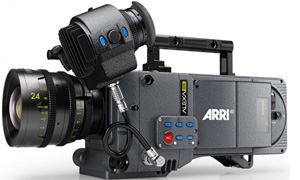
-- Assassin’s Creed – DP: Adam Arkapaw
-- Doctor Strange – DP: Ben Davis, BSC
-- Live by Night - DP: Robert Richardson, ASC
-- Passengers – DP: Rodrigo Prieto, ASC, AMC
-- Sully – DP: Tom Stern, ASC, AFC
Not yet released:
-- Mary Magdalene – DP: Greig Fraser
-- Okja – DP: Darius Khondji, ASC, AFC
I should add that Dunkirk by Christopher Nolan was shot in 65mm film by Hoyte van Hoytema, ASC, FSF, NSC.
Vistavision is also emerging as the medium format of choice. Red did a limited release of Vistavision-sized 8K Weapon VV cameras, which were used to shoot Guardians of the Galaxy Volume 2 directed by James Gunn, with cinematography by Henry Braham, BSC. At the end of the year during Camerimage, Panavision unveiled its promising new DXL system, a "Panavized" Red camera, based on the same sensor.
+++
8. Future of Cinema
The most revolutionary movie I saw this year is BILLY LYNN'S LONG HALFTIME WALK by Ang Lee. Lee and cinematographer John Toll, ASC, create a unique cinematic experience with the combination of several technologies: 120 fps capture and projection, 4K, stereo 3D and high screen brightness. John adapted his lighting to enhance the intimacy and presence of the actors on screen in a film that offers a glimpse of the amazing future of cinema.
+++
9. VR Masterworks
Virtual Reality is an emerging medium that, to date, has mostly failed to deliver on its promise. This past year I experienced two extraordinary VR works:
-- MAASAI, an episode of NOMADS by VR masters Felix Lajeunesse and Paul Raphael with sound by Headspace Studio. Felix and Paul's superb stereo 3D VR technology succeeds in placing us in front of Maasai tribesmen, and most importantly, conveying their presence. Bravo.
-- NOTES ON BLINDNESS: INTO DARKNESS conceived by Arnaud Colinart, Amaury La Burthe, Peter Middleton & James Spinney with cinematography by Gerry Floyd places us in darkness and evokes blindness by visualizing the sounds that surround us. Beautifully poetic.
+++
LINKS
YouTube trailers:
BILLY LYNN'S LONG HALFTIME WALK
thefilmbook: JACKIE - Interview with Cinematographer Stéphane Fontaine, AFC
thefilmbook: Billy Lynn's Long Halftime Walk - A Revolutionary Screening From Ang Lee
theasc.com: Fences article by John Calhoun
theasc.com: Paterson article by Iain Marcks
slate.com: The Black Film Canon by Aisha Harris and Dan Kois
nytimes.com: Watching While White: : How Movies Tackled Race and Class in 2016 by A.O. Scott and Manohla Dargis
jamesturrell.com: Ganzfeld
thefilmbook: Large Format – Notes on Lenses & Elastic Formats
thefilmbook: The Elastic Frame
felixandpaul.com: MAASAI
notesonblindness.co.uk: NOTES ON BLINDNESS: INTO DARKNESS
thefilmbook: VR Cinema 4: Content
thefilmbook: VR Cinema 5 : Futures
thefilmbook: 2015 in Review
+++
All 9 of these trends promise that 2017 will be an exciting year for cinema art and technology, and I shall return to some of these themes in future posts.
+++
photo of Chivo by Benjamin B
+++

